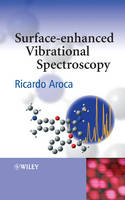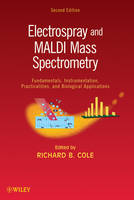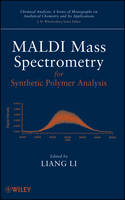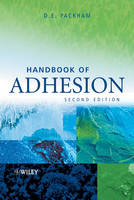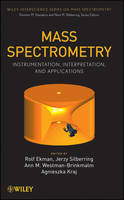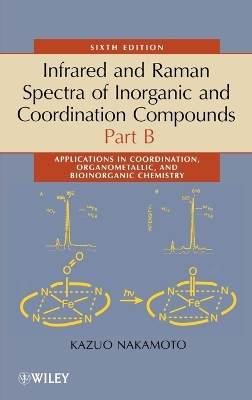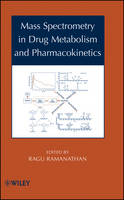Molecular Spectroscopy of Oxide Catalyst Surfaces
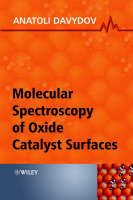 -15%
portes grátis
-15%
portes grátis
Molecular Spectroscopy of Oxide Catalyst Surfaces
Davydov, Anatoli
John Wiley & Sons Inc
04/2003
690
Dura
Inglês
9780471987314
15 a 20 dias
1298
Symbols and abbreviations.
Introduction.
1. Theoretical fundamentals and experimental considerations of spectroscopic methods used in surface chemistry.
Electronic spectroscopy (ES).
Vibrational spectroscopy.
Electron energy loss spectroscopy (EELS).
Inelastic electron tunneling spectroscopy (IETS).
Inelastic neutron scattering spectroscopy (INS).
Other vibrational spectroscopies.
In situ measurements.
Quantitative measurements.
2. Nature of oxide surface centers.
Systems investigated.
Spectral of oxide surfaces.
Determination of the nature of surface sites and their chemical properties using the adsorption of simple molecules.
Determination of acidic surface properties.
Determination of basic surface properties.
Surface defects.
3. Study of cation states by DRES and FT-IR spectroscopies of the probe molecules.
Copper-containing systems.
Nickel-containing systems.
Co-containing systems.
Iron-containing systems.
Silver-containing systems.
Palladium-containing systems.
Rhenium-, Ruthenium-, and Rhodium-containing systems.
Platinum-containing systems.
Molybdenum-containing systems.
Vanadium-containing systems.
Chromium-containing systems.
Effects of the state of adsorption sites on the stretching frequencies of adsorbed Carbon monoxide and Nitrous oxide and the problem of detecting the states of cations in oxide catalyst surfaces.
4. Interactions of inorganic compounds with oxide surface active sites.
Organometallic complexes.
Metal carbonyls and nitrosyls.
Interaction with simple acids and bases.
Heteropoly compounds Systems.
Thermal stability of molybdenum compounds, decomposition mechanism and the role of modifiers.
Cationic modification.
5. Formation of surface complexes of organic molecule.
Complexation of Alkenes.
Complexation of Aryls and aryl halides.
Complexation of Alkynes.
Complexation of Alkanes.
Complexation of Nitriles.
Complexation of Alcohols.
Complexation of Aldehyde and ketone.
Complexation of Acids.
6. The mechanisms of heterogeneous catalytic reactions.
Reactions involving carbon monoxide.
Reactions with participation of hydrocarbons.
Transformations of aldehydes and ketones.
Transformations of alcohols
Transformations of nitrogen-containing compounds.
References.
Index.
Symbols and abbreviations.
Introduction.
1. Theoretical fundamentals and experimental considerations of spectroscopic methods used in surface chemistry.
Electronic spectroscopy (ES).
Vibrational spectroscopy.
Electron energy loss spectroscopy (EELS).
Inelastic electron tunneling spectroscopy (IETS).
Inelastic neutron scattering spectroscopy (INS).
Other vibrational spectroscopies.
In situ measurements.
Quantitative measurements.
2. Nature of oxide surface centers.
Systems investigated.
Spectral of oxide surfaces.
Determination of the nature of surface sites and their chemical properties using the adsorption of simple molecules.
Determination of acidic surface properties.
Determination of basic surface properties.
Surface defects.
3. Study of cation states by DRES and FT-IR spectroscopies of the probe molecules.
Copper-containing systems.
Nickel-containing systems.
Co-containing systems.
Iron-containing systems.
Silver-containing systems.
Palladium-containing systems.
Rhenium-, Ruthenium-, and Rhodium-containing systems.
Platinum-containing systems.
Molybdenum-containing systems.
Vanadium-containing systems.
Chromium-containing systems.
Effects of the state of adsorption sites on the stretching frequencies of adsorbed Carbon monoxide and Nitrous oxide and the problem of detecting the states of cations in oxide catalyst surfaces.
4. Interactions of inorganic compounds with oxide surface active sites.
Organometallic complexes.
Metal carbonyls and nitrosyls.
Interaction with simple acids and bases.
Heteropoly compounds Systems.
Thermal stability of molybdenum compounds, decomposition mechanism and the role of modifiers.
Cationic modification.
5. Formation of surface complexes of organic molecule.
Complexation of Alkenes.
Complexation of Aryls and aryl halides.
Complexation of Alkynes.
Complexation of Alkanes.
Complexation of Nitriles.
Complexation of Alcohols.
Complexation of Aldehyde and ketone.
Complexation of Acids.
6. The mechanisms of heterogeneous catalytic reactions.
Reactions involving carbon monoxide.
Reactions with participation of hydrocarbons.
Transformations of aldehydes and ketones.
Transformations of alcohols
Transformations of nitrogen-containing compounds.
References.
Index.



